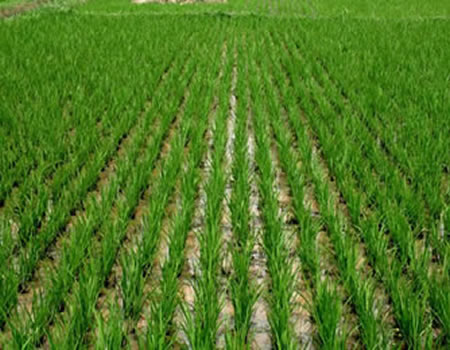THE African Agricultural Technology Foundation (AATF) and partners will soon develop and disseminate a Nitrogen-Use Efficient, Water-Use Efficient and Salt Tolerant Rice (NEWEST) for food sufficiency in Sub-Saharan Africa.
Researchers involved in the development of Nitrogen-Use Efficient, Water Use Efficient and Salt-Tolerant Rice, insist it will lead to self-sufficiency in rice production
The AATF Executive Director (ED), Dr Denis Kyetere made this known at the NEWEST Rice Project Annual Review and Planning Meeting held at International Institute of Tropical Agriculture (IITA), Ibadan.
Kyetere said the goal of the project was to develop, disseminate farmer preferred, locally adapted rice varieties with enhanced nitrogen, water use efficiency and salt tolerance.
He noted that it would lead to food sufficiency, adding that food self-sufficiency in rice will redirect limited foreign exchange used to import rice.
In his words, Kyetere said “there will be improved rice yields resulting in enhanced household food security and production of marketable crop surplus.”
“Also abandoned croplands will be reclaimed reducing land shortages; an additional 1.3 million tons of rice will be produced in Africa each year, reducing the current deficit by 10 per cent.”
Also speaking, Dr Mohammed Ishiaq, Director, Information and Documentation Department, National Cereal Research Institute (NCRI) emphasized that rice demand exceeded production in most Sub-Saharan
Africa. Ishiaq who represented the NCRI Executive Director, Dr Samuel Agboire, said insufficient rice production affected well-being of over 20 million smallholder farmers who depend on rice as a staple.
“Sub-Saharan Africa countries are spending more than US$5 billion annually on rice imports, rice production deficit along with large outflow of foreign exchange presents great development challenge to governments in SSA. Low yields experienced by farmers are responsible for rice imports in SSA where over 40 per cent of the rice consumed is imported. Also nitrogen deficiency has been cited as a major constraint to rice production; nitrogen is difficult to maintain when applied in lowland areas due to floods,” he said.
According to the project manager, Dr Kayode Sanni, the project started in 2008 and that the essence was to have excess rice production and reduce its importation by or before 2020.
“Improving the nitrogen use efficiency of rice is one means of achieving this goal. With the utilization and application of water use efficient component, the rice will require less water and this will offer an appreciable coping mechanism against drought,” he said.
Sanni noted that the project was funded by the United States Agency for International Development (USAID).
Scientists from AATF, National Cereal Research Institute, NCRI, Badegi, Nigeria, Crop Research Institute, CRI, Kumasi, Ghana, National Research Organisation, NARO, Uganda, Arcadia Biosciences, USA and International Centre for Tropical Agriculture, CIAT, Colombia form the team that is working on the development of this variety.
WATCH TOP VIDEOS FROM NIGERIAN TRIBUNE TV
- Relationship Hangout: Public vs Private Proposals – Which Truly Wins in Love?
- “No” Is a Complete Sentence: Why You Should Stop Feeling Guilty
- Relationship Hangout: Friendship Talk 2025 – How to Be a Good Friend & Big Questions on Friendship
- Police Overpower Armed Robbers in Ibadan After Fierce Struggle






